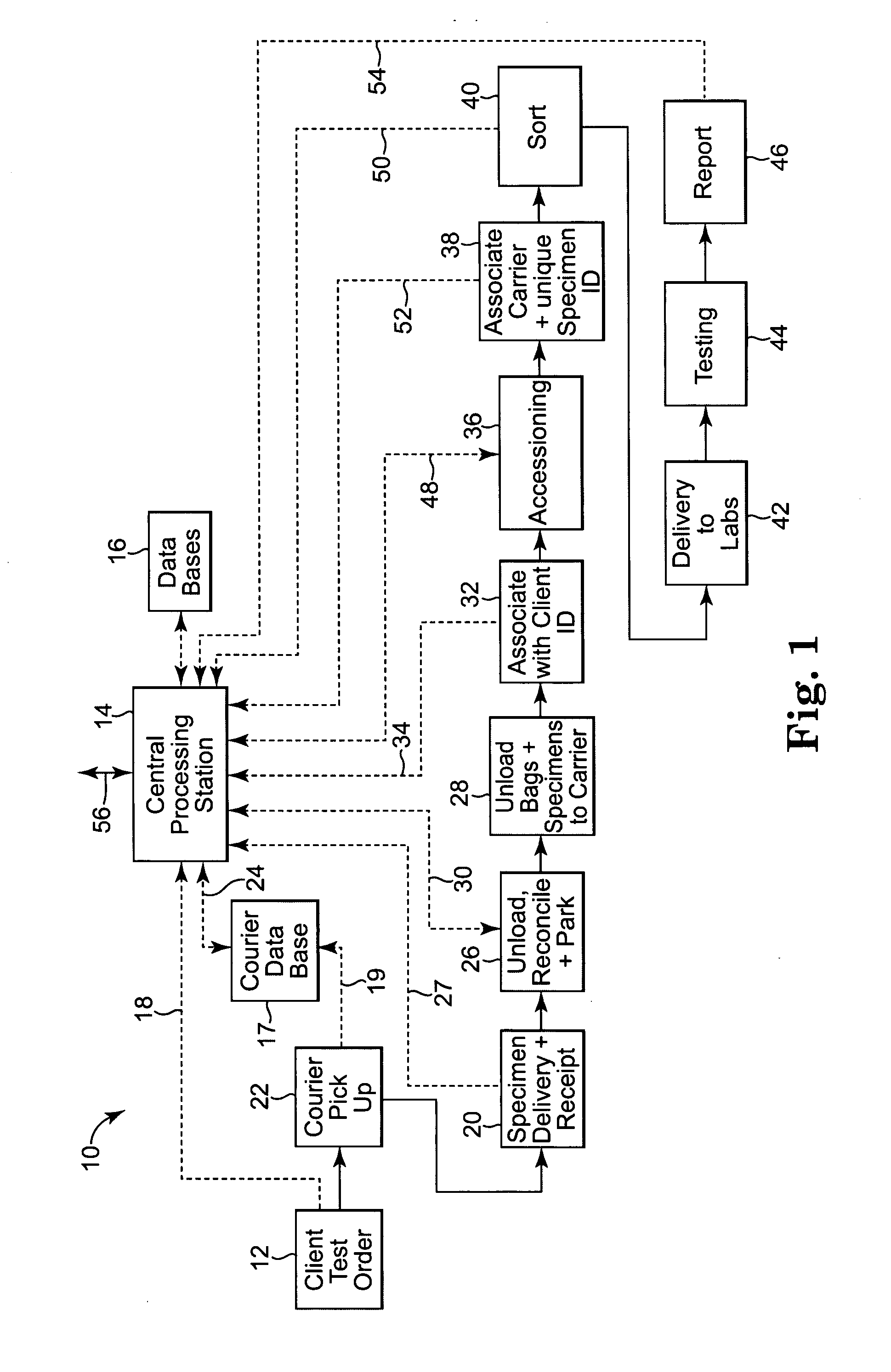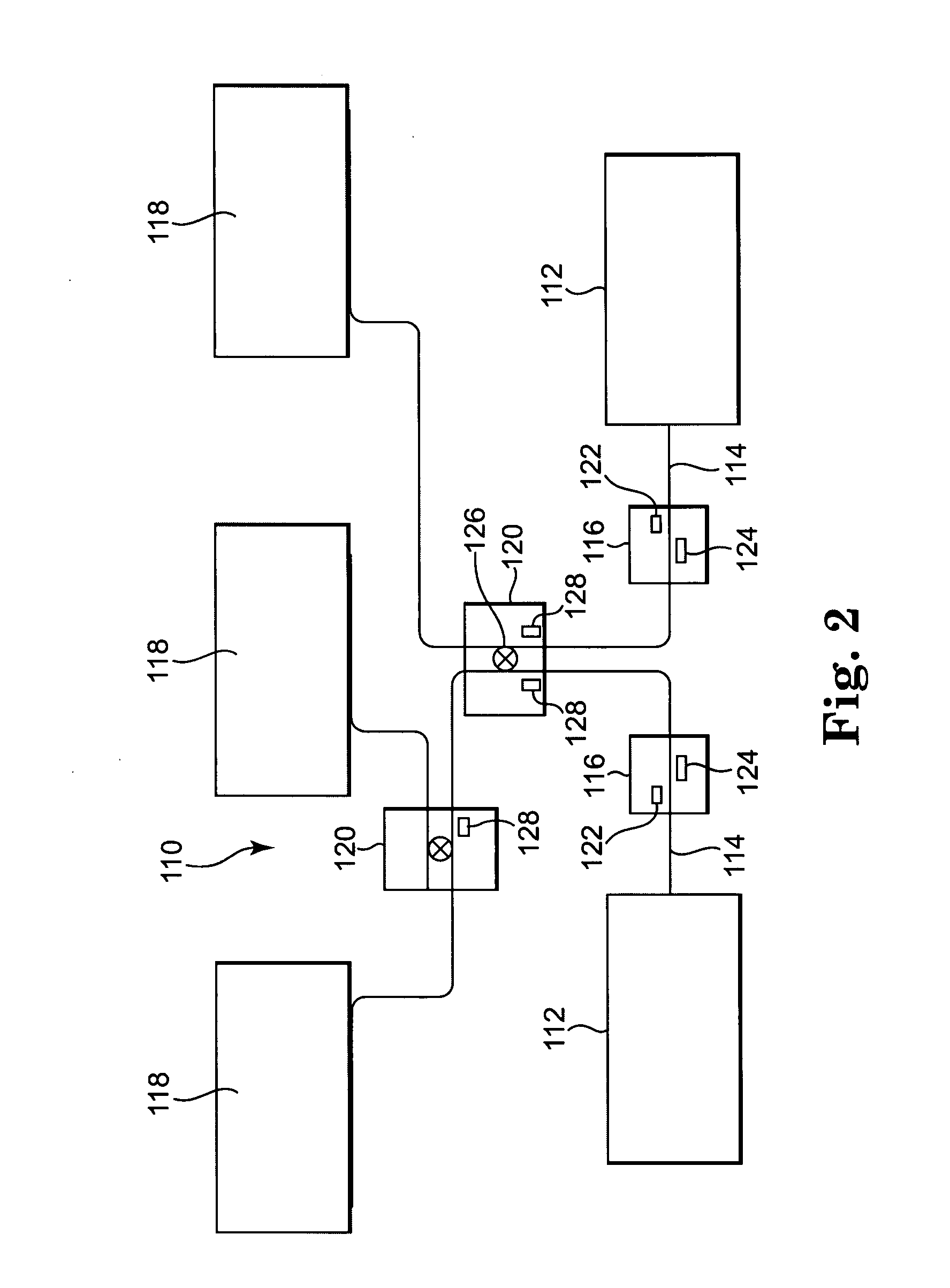Automated systems for handling specimens for laboratory diagnostics and associating relevant information
a technology for laboratory diagnostics and automated systems, applied in biochemistry apparatus and processes, instruments, material analysis, etc., can solve the problems of less likely a healthcare facility will be able to conduct such diagnostic tests on its own, less knowledge, training and/or instrumentation, etc., to facilitate a reduction of labor intensity, reduce the possibility of specimen misplacement or mislabeled, and greatly reduce the human touch point of specimens
- Summary
- Abstract
- Description
- Claims
- Application Information
AI Technical Summary
Benefits of technology
Problems solved by technology
Method used
Image
Examples
Embodiment Construction
[0027] The present invention is directed to methods and systems that have applicability for use in diagnostic laboratories, particularly biological specimen diagnostic laboratories that handle large volumes of specimens as are submitted by clients of the diagnostic laboratory for diagnostic testing. Such a laboratory facility, as discussed above in the Background section, may have many associated specific labs, each of which may perform different diagnostic testing based on different technological test procedures. Moreover, in being able to handle esoteric testing of specimens by diagnostic test procedures of a large variety, the specimens must be handled carefully and efficiently and tracked accurately so that the proper diagnostic tests are conducted in a timely manner. In other words, to be effective as an esoteric diagnostic laboratory, a large number of diagnostic test procedures should be available and the laboratory should be able to handle large volumes of specimens for comm...
PUM
| Property | Measurement | Unit |
|---|---|---|
| volume | aaaaa | aaaaa |
| temperature | aaaaa | aaaaa |
| color | aaaaa | aaaaa |
Abstract
Description
Claims
Application Information
 Login to View More
Login to View More - R&D
- Intellectual Property
- Life Sciences
- Materials
- Tech Scout
- Unparalleled Data Quality
- Higher Quality Content
- 60% Fewer Hallucinations
Browse by: Latest US Patents, China's latest patents, Technical Efficacy Thesaurus, Application Domain, Technology Topic, Popular Technical Reports.
© 2025 PatSnap. All rights reserved.Legal|Privacy policy|Modern Slavery Act Transparency Statement|Sitemap|About US| Contact US: help@patsnap.com



